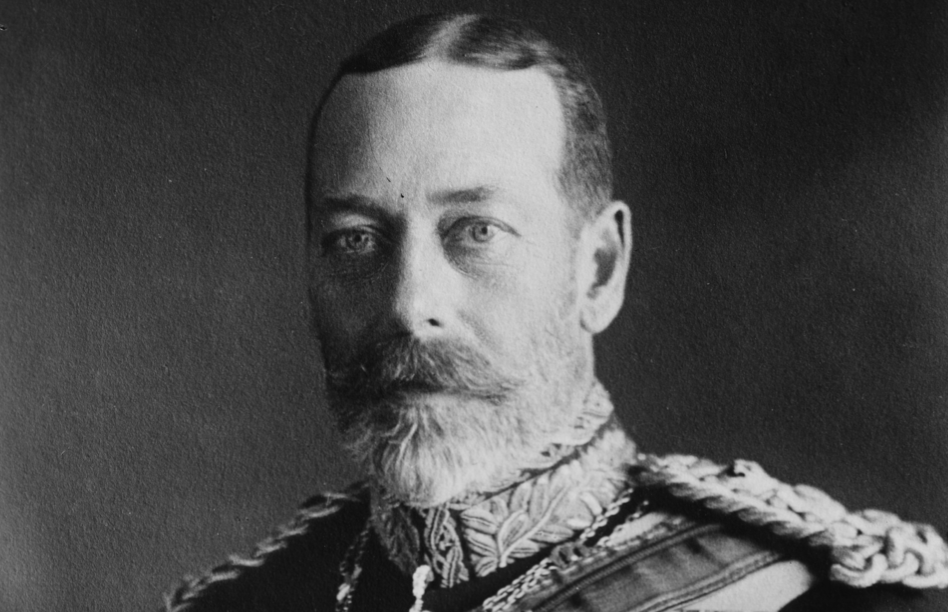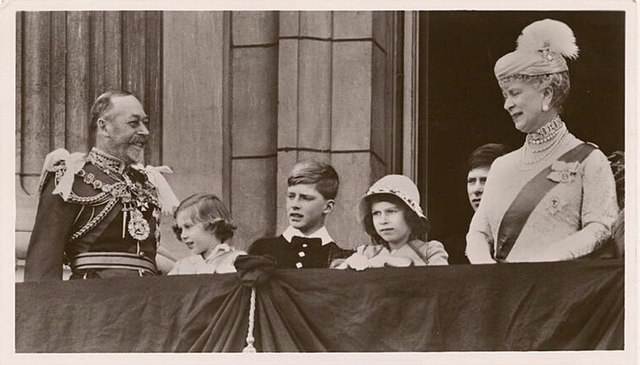
On a bright spring day in 1935, King George V became the first British Monarch to celebrate a Silver Jubilee.
The 25th anniversary of his reign followed plenty of royal tradition but there was also innovation in the celebrations as well as a rather historic moment on the Buckingham Palace balcony.
No other British king or queen had held festivities to mark a quarter of a century of rule. Jubilees traditionally commemorate a period of fifty years but in the late 19th century, a vogue for ’25 Jubilees’ as they were first known sprang up in Europe.
In 1897, the year that George’s grandmother, Queen Victoria, had celebrated her Diamond Jubilee, King Oskar II of Sweden had held celebrations for the 25th anniversary of his reign in Stockholm. Since then, the Netherlands had held a high profile Silver Jubilee for Queen Wilhelmina while in 1930, George’s own sister, Queen Maud of Norway, and her husband, Haakon VII, held celebrations to mark a quarter of a century of rule.

who would become the next British Monarch to mark a Jubilee
(photo Wiki Commons)
George was agreeable to a Jubilee of his own but was clear from early on in the planning process that the celebrations shouldn’t cost too much or take funds away from more important issues. His own Silver Jubilee came as Britain experienced economic difficulties and unemployment was high.
As with past British jubilees, the theme of helping others was prevalent. One of George’s gifts was a plantation of trees in his honour which was developed to provide long term work for hundreds of people. His eldest son, Edward, the Prince of Wales, led efforts for the King George V Silver Jubilee Trust Fund which aimed to provide opportunities for sport and exercise for young people across the UK.
The main Jubilee celebrations were set for May 6th 1935, exactly 25 years to the day that George came to the throne. A Service of Thanksgiving was held at St. Paul’s Cathedral, following the tradition established for Victoria’s Diamond Jubilee. King George V and Queen Mary rode through huge crowds to the service where they were joined by their family. Another carriage procession through more crowded streets took them back to Buckingham Palace for a balcony appearance.
Meanwhile, the tradition of community feasting to mark Jubilees continued. Since the first royal anniversary celebrations, for George III in 1809, communal meals had been a major part of the celebrations. However, in 1935 things began to change. While the 19th century festivities had been focused on ox roasts and beef dinners for the poor, paid for by the rich, this first 20th century celebration brought the street party into Jubilees.
The idea of street parties had originated in 1919 as ‘peace teas’, party dinners put on for children who had lost relatives in the First World War. In 1935, they were adapted to become the community celebrations for the king’s reign.
George also innovated when it came to another royal tradition. For centuries, beacons had been lit to mark major regal milestones and they had become an integral part of Jubilee celebrations. However, George loved new technology and lit his Jubilee beacon by pressing a button which ignited the flames. He was less keen on another ‘modern’ tradition.
New stamps had been issued around the time of Victoria’s Golden celebrations which had become known as the Jubilee set even though they had been planned and designed without any thought to her anniversary. King George V loved stamp collecting but wasn’t so keen on commemorative editions. However, he was persuaded to allow one to be issued to mark his anniversary although he took a keen interest in the final format and wasn’t afraid to share his opinions as the creation developed.
George and Mary also took their Jubilee to their people. Queen Victoria had visited Jubilee celebrations organised in parts of Windsor and London but George took this one step further. He arranged car tours of different parts of London. With Queen Mary at his side, they drove through crowds before stopping off for lunches and celebrations where they met local dignitaries and officials as well as community representatives.
But perhaps the biggest change from past Jubilees was George’s decision to use modern technology to speak to millions around the world. Using the still modern medium of radio, he broadcast to the Empire on the evening of May 6th 1935. George was a confident public speaker but as he began to express his thanks for the huge outpouring of support for his Jubilee, he stumbled. There was no doubt the king was overwhelmed by the appreciation shown to him as he marked this special milestone.
He ended his speech with the words sent by Queen Victoria around the world, by telegram, to mark her Diamond Jubilee, quoting her directly as he said ‘From my heart, I thank my beloved people, may God bless them.’’
That link to the past came just hours after an appearance that would link George to the future of Jubilees. As he stood on the balcony of Buckingham Palace, he had been joined by his grandchildren including his eldest granddaughter, Elizabeth. She had looked out across the crowds, seemingly lost in thought, while her grandfather smiled and waved. Four decades later, she would stand in his place. George didn’t know that Elizabeth would inherit his throne. But the Jubilee king who had quoted the Jubilee queen had in fact been joined by a monarch in waiting who would make Jubilees her very own.

